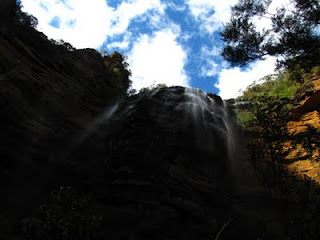
Thanks to the people who have taken an interest in my blog and all the lovely comments. Taking an idea from Red's Australia blog, here is a round-up of three of my most memorable posts from the past year and a half...
My most popular post
 |
| Bowerbirds lovemaking in the lovenest |
My most beautiful post
 |
| Lovestruck Galahs |
My personal favourite post
 |
| A Brush-tail Possum in the red spotlight |
These are just a few memorable moments, others include watching the baby Wattle birds grow, a soldier beetle mating frenzy, cute bathing parrots and the challenge and reward of trying to photograph many fast moving little birds like the Eastern Spinebill, New Holland Honeyeater and Spotted Pardalote! Watching the seasons change in the garden and the wonderful colours and aromas of the beautiful flowers (at least, those that don't give me hayfever) has been fantastic. I was really chuffed that my Cicada photo was a finalist in the ABC 'summer bugs' competition, and I recently discovered that this blog featured as 'website of the month' in a recent issue of the ABC Gardening Australia Magazine! Such a wonderful two years, thank you ANBG, I will miss you.















































